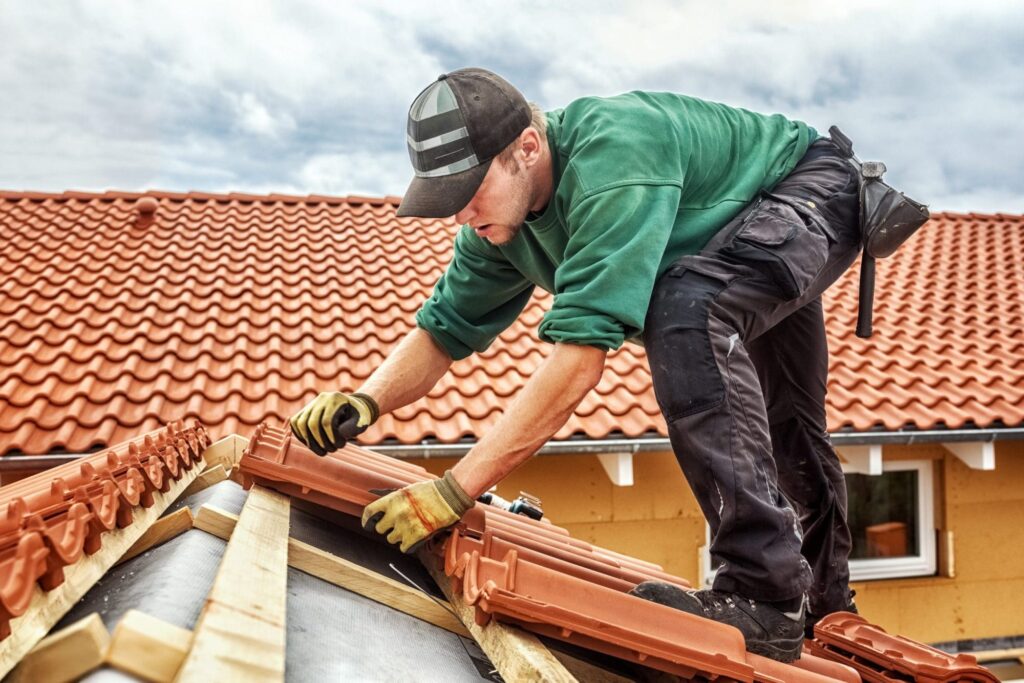Installing a clay tile roof is an excellent way to enhance the aesthetic appeal, durability, and energy efficiency of your home. Known for their longevity and ability to withstand the elements, clay tiles are a top choice for homeowners looking for both beauty and functionality. However, installing a clay tile roof requires careful preparation due to the weight of the tiles, the unique installation process, and specific requirements that differ from traditional roofing materials.
In this article, we’ll discuss the key steps to prepare your home for clay tile roof installation, ensuring a smooth and successful project.
1. Evaluate the Condition of Your Existing Roof Structure
One of the first steps in preparing for clay tile roof installation is evaluating the condition of your existing roof structure. Clay tiles are heavier than asphalt shingles or wood shakes, so the underlying roof framing must be strong enough to support the weight. If your roof has structural weaknesses, such as rotting wood or worn-out rafters, these issues must be addressed before the installation.
A professional roofing contractor will assess the structural integrity of your roof and, if necessary, reinforce or replace parts of the framework. This is essential to ensure that the tiles will be installed correctly and will remain secure for many years.
2. Obtain Necessary Permits and Approvals
Clay tile roof installation is a significant project that often requires permits from your local building authority. Before work can begin, your contractor will need to submit plans and gain approval for the new roof. This process ensures that the installation complies with local building codes, which is especially important for a project that involves a heavy material like clay tiles.
In addition to the permit, you may need to meet specific zoning regulations regarding roof height or style, depending on your location. A professional contractor will handle the permit process for you, ensuring all legal requirements are met before starting the installation.
3. Clear the Work Area
A successful clay tile roof installation requires a clear work area around your home. The contractor will need easy access to your roof, so it’s important to move vehicles, lawn furniture, and other obstacles out of the way. Additionally, any plants or landscaping near the roofline should be covered or moved to protect them from falling debris during installation.
It’s also a good idea to clear the interior of your home of fragile or valuable items. While roof work is typically done outside, vibrations or small pieces of debris can make their way inside through vents, windows, or gaps. By taking precautions, you’ll ensure that your home and belongings are protected.
4. Consider Roof Underlayment and Insulation
The underlayment is the material placed directly beneath your clay tiles that provides an extra layer of protection against water infiltration. In many cases, the underlayment is made of asphalt felt or synthetic materials, but for clay tile roofs, it’s essential to choose a high-quality, durable underlayment that can handle the weight and provide a waterproof barrier.
Additionally, consider adding or upgrading your attic insulation. Proper attic ventilation and insulation are crucial for maintaining a comfortable indoor climate and preventing heat buildup beneath the tiles. Clay tiles are known for their natural ability to regulate temperature, but ensuring that your attic is adequately insulated will enhance this effect.
5. Prepare for the Noise and Mess
Roof installation can be a noisy and messy process, so it’s important to mentally prepare for the disruption. Depending on the size of your home and roof, the installation may take several days or even weeks. Be prepared for noise from hammering, tile cutting, and other construction activities.
To minimize the impact, try to designate a quiet area of your home where you and your family can retreat during the busiest parts of the installation. If you work from home or have young children, consider making arrangements to temporarily work or stay elsewhere during the most disruptive phases.
Additionally, expect debris like broken tiles, nails, and dust to accumulate around the worksite. Your contractor will likely have a plan in place to clean up the area daily, but it’s helpful to know that some mess is inevitable.
6. Choose the Right Clay Tile for Your Home
There are several different types of clay tiles to choose from, each offering unique aesthetics and performance benefits. The two main categories of clay tiles are:
-
Spanish tiles: Known for their distinct “S” shape, Spanish clay tiles are often used in Mediterranean or Southwestern-style homes.
-
French or Roman tiles: These tiles have a flatter shape and are frequently used in more traditional or contemporary-style homes.
You’ll also need to select the color and finish of your tiles. Clay tiles come in various shades, from earthy reds to more muted tones like browns and grays. Consider the overall style of your home and neighborhood when making your choice. Your roofing contractor can provide advice on which tiles will complement your home’s design and climate.
7. Plan for Roof Access and Safety Measures
Due to the height of the roof, the installation process requires careful attention to safety. A qualified contractor will have the necessary equipment and experience to perform the job safely. Ladders, scaffolding, and safety harnesses are typically used to ensure that workers can reach the roof without putting themselves at risk.
Ensure that your contractor has a safety plan in place, including precautions for workers and protection for people and pets around the work area. It’s also essential that the team is trained in proper ladder safety and roof handling to avoid any accidents during installation.
8. Understand the Timeline and Costs
The timeline for clay tile roof installation can vary depending on the size and complexity of the project. On average, the installation can take anywhere from a few days to a few weeks. The contractor will provide a detailed schedule, but be prepared for potential delays due to weather conditions or unforeseen structural issues.
The cost of installing a clay tile roof is typically higher than that of traditional roofing materials due to the labor-intensive installation process and the cost of the tiles themselves. Be sure to get a detailed quote from your contractor that includes all aspects of the project, including labor, materials, and any necessary repairs.
Conclusion
Preparing your home for clay tile roof installation requires careful planning and attention to detail. From ensuring your roof structure is strong enough to support the tiles to selecting the right tiles for your home’s style, every step is crucial for a successful installation. By following the guidelines outlined above, you can ensure that your clay tile roof installation goes smoothly, providing you with a durable, attractive roof that will last for many years.



